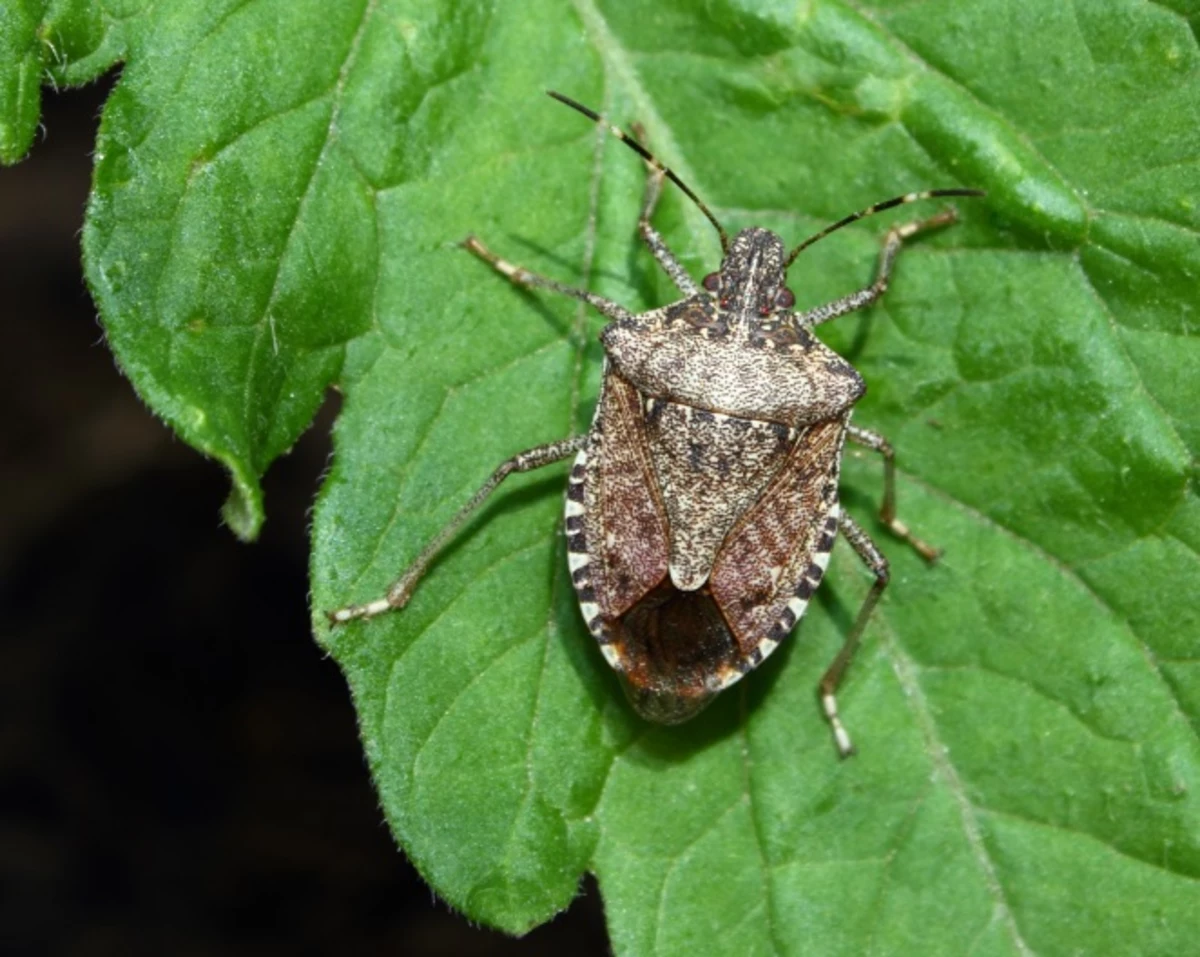
Stink bugs, along with their other more unpleasant insect friends (like roaches), are one of the more unpleasant harbingers of spring. Along with fruit flies or gnats, you’ll likely welcome stink bugs into your garden or home at some point, too. The type of stink bug you have most likely encountered is invasive brown marmorated stink bug (BMSB, for short), which was introduced to North America in the mid-1990s from its native Asia and is harmless to humans but can certainly become a nuisance if left to roam freely around sunny, otherwise-pleasant bathrooms and bedrooms. Before you go into full bug-zapping mode, read up on the root of the problem and find tips for prevention and management.
What attracts stink bugs?
While it may seem as if these pests appear out of nowhere, their presence can usually be attributed to a handful of factors. Stink bugs like fruit (especially ripe fruit) so if you’re a fan of the classic countertop fruit bowl, your ripe bunch of bananas could be a culprit. Unfortunately for gardening gurus, stink bugs also enjoy a wide variety of native plants, from ornamental shrubs to wild vines and weeds. They are known to snack on any and all parts of plants, including the blooms, buds, fruits or vegetables, and even nuts, so chances are high that your garden contains some flora of interest.
To add to the list of unavoidable stink bug attractions, these insects love warmth and sunlight. They typically go through a “hibernation” period during cold winter months, often hiding in walls or unoccupied spaces like attics. When winter temperatures start to rise and days get sunnier, the bugs come out of hiding (eek!) and become more active. Stink bugs can weasel their ways into spaces, but often cannot figure out how to escape, thus causing a small community to suddenly inhabit your home.
What do stink bugs smell like?
Stink bugs are part of an insect family that uses smell as a defense mechanism. When threatened or squashed, stink bugs emit a strongly scented substance from a gland in their abdomen. (Yuck!) To human noses, the smell resembles herbs or spices, like cilantro, mixed with a chemical smell. In other words, it’s not a pleasant odor. If you come across a stink bug, try gently transferring the bug outside or using an insect-trapping vacuum (or similar bug zapper) to remove it without smushing it or causing distress.
Do stink bugs bite?
Stink bugs stick to plants and other outdoor food sources. They do not sting or bite, and while they have a tendency to sneak up and pull a surprise landing on you (or in your clothes, or in your hair), stink bugs are generally harmless to humans.
When is stink bug season?
Stink bugs exist year-round, but you are more likely to see a bump in stink bug sightings during the spring and summer months, when temperatures rise and the bugs that sought a warm winter haven in your home or garden begin to venture back out into the open.
How do I keep stink bugs out of my house?
Check entry points.
Start by examining all possible entry points and addressing any obvious cracks or openings. Check window frames (especially in areas that receive frequent sunlight), door frames, exterior wood siding, and even around electrical outlets and light fixtures. Seal up any areas in question with caulk (a silicone-based formula is recommended for glass), or perform necessary repairs to fix larger openings and possible entry points.
Assess exterior lighting.
Because stink bugs are attracted to light, consider switching out exterior light bulbs for yellow bulbs or sodium-vapor lights, which are known to be less “attractive” to insects. (Sodium vapor lights are often used to reduce light pollution in big cities, or near beaches with sea turtle nesting activity.)
Consider chemicals.
If you’ve sealed all entry points to the best of your abilities and tried reducing light, your stink bug situation might require some chemical assistance. Common chemical sprays contain deltamethrin, a pesticide known to kill stink bugs, and can be used near common entry points or around windows or other spots where the bugs like to congregate.
Try a home remedy.
A simple combination of hot water, dish soap, and white vinegar is suggested to be an effective “trap” for stink bugs. (Farm & Dairy recommends filling a spray bottle with 2 cups of hot water, 1 cup of white vinegar, and 1/2 cup dish soap, then spraying the bugs directly.)
